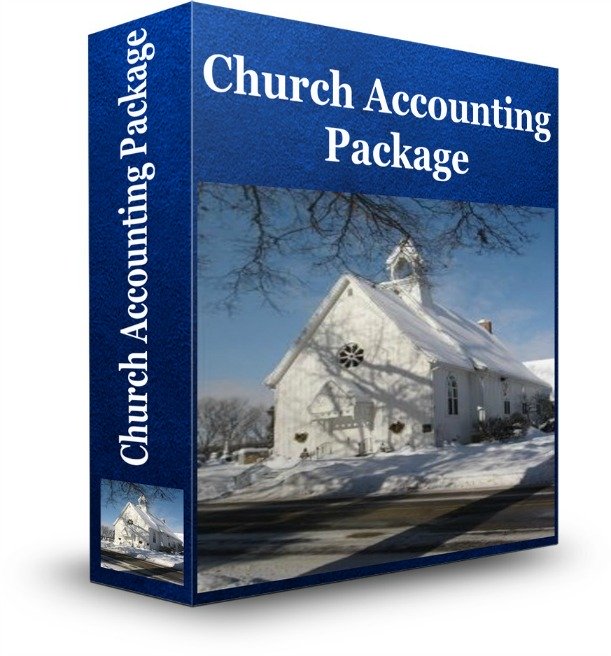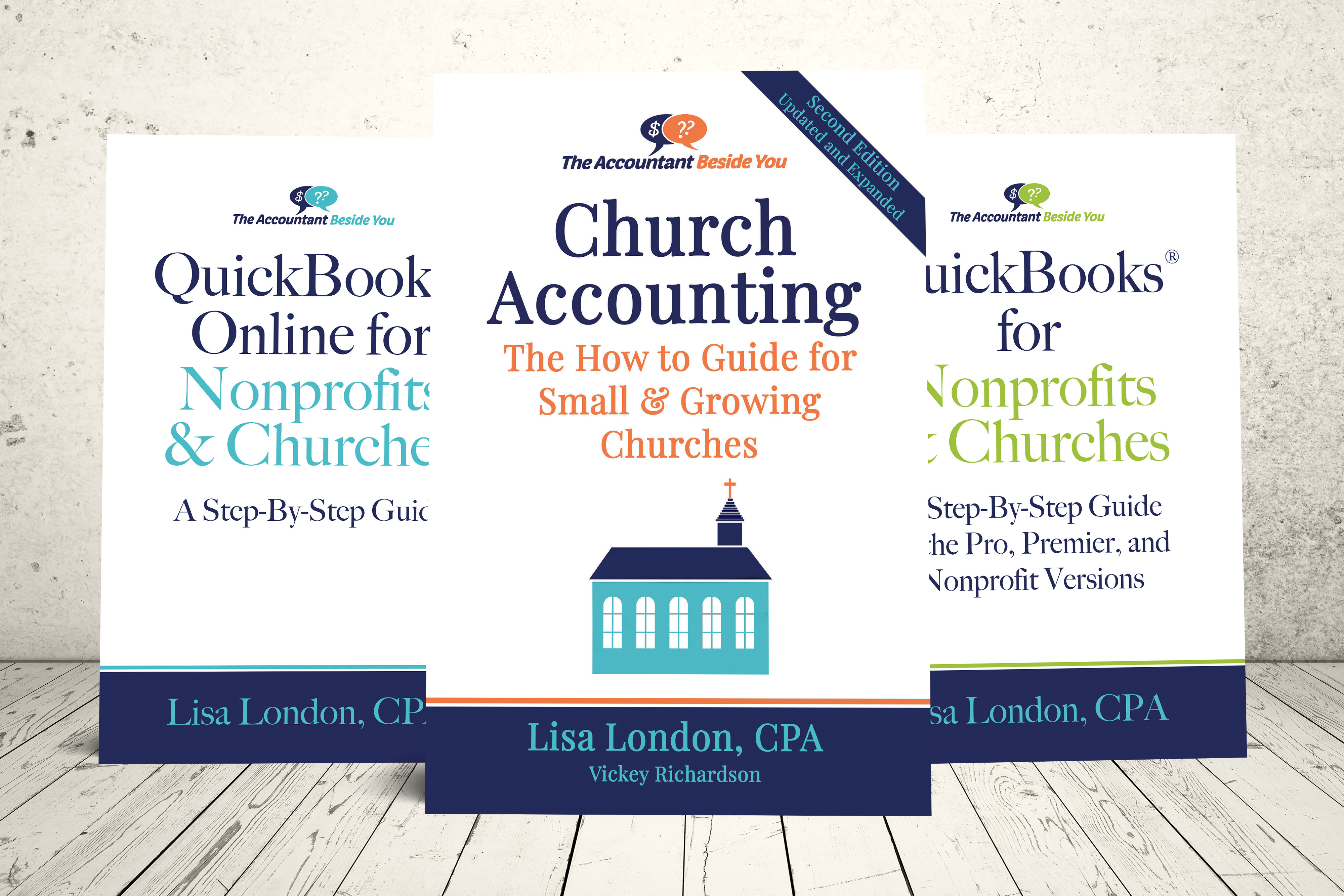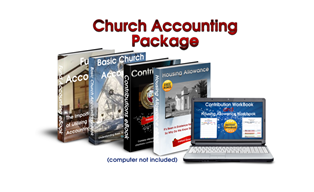Accounting Definitions
Read the following nonprofit accounting definitions before reading the basic accounting page to better understand the basic accounting concepts.

Coupon!
Here is a 10% discount code for all the ebooks, spreadsheets, and packages on this site:
FCA
Note: click on "PACKAGES" in the top navigation bar for a list of all of the ebook and spreadsheet packages on this site!
Account: A record in the general ledger that is used to collect and store similar information. For example, a nonprofit organization will have a Cash account in which every transaction involving cash is recorded.
Accounting Cycle: A term that describes the steps when processing transactions (analyzing, journalizing, posting, preparing trial balances, adjusting, preparing financial statements) in a manual accounting system. Today many of the steps occur simultaneously when using accounting software.
Accounting Equation: Assets = Liabilities + Net Assets. Because of double-entry accounting this equation should be in balance at all times. The accounting equation is expressed in the financial statement known as the Statement of Financial Position. To learn more, see this page on basic accounting concepts.
Accrual Basis Method of Accounting: Revenue is counted and recorded when it is earned. For example, your church rents out its fellowship hall for a wedding, under the accrual method the fee would be recorded at the time of the rental...not when it actually receives the money. Expenses are recorded when you receive the goods or services. For example, a church buys supplies on credit, you would record the expense when you receive the supplies not when you actually pay the bill. Note: Most churches use the cash basis of accounting.
Assets: Things that are resources owned by a nonprofit organization and which
have future economic value that can be measured and can be expressed in
monetary value. Examples include cash, investments, supplies, land,
buildings, equipment, and vehicles.
Bank Reconciliation: The process of comparing the amounts in the Cash account in the general ledger to the amounts appearing on the bank statement. The objective is to be certain that there is consistency between the amounts and that the nonprofit organization's amounts are accurate and complete.
Cash Basis Method of Accounting: Revenue is counted and recorded only when cash is received. Expenses are recorded when they are actually paid. Note: Most churches use the cash basis of accounting.
Chart of Accounts: A listing of the accounts available in the accounting system in which to record entries. The chart of accounts consists of statement of financial position accounts (assets, liabilities, net assets) and statement of activities accounts (donations and expenses). The chart of accounts can be expanded and tailored to reflect the operations of the nonprofit organization.
Comparative Financial Statements: Financial statements that show more than the current year's amounts. For
example, it is generally accepted that a nonprofit’s statement of
activities will show the most recent three years of results. This
provides the reader with two years of past amounts as a frame of
reference for the most recent year.
Comparative nonprofit's statements of financial position typically show
the most recent two years. See this page on
understanding financial statements.
Contributions: The revenue classification used by nonprofit organizations to account
for the amounts received as donations. It is also an expense
classification for the donations made to another nonprofit organization.
Contributions may be in the form of cash, securities, other property, as well as unconditional promises to give assets at a later date.
Contributions made by a donor without conditions attached are referred to as unrestricted contributions. Contributions with donor-imposed restrictions are either temporarily restricted or permanently restricted. You can learn more on this page about contributions.
Credit (as in debit and credit): To enter an amount on the right side of an account. Normal entries to revenue accounts are credits.
Liabilities normally have credit balances. To learn more, see this page on
Debits and Credits.
Current Assets: Cash and
other resources that are expected to turn to cash or to be used up
within one year of the statements of financial position date. Current
assets are presented in the order of liquidity, i.e., cash, temporary
investments, accounts receivable, supplies, prepaid insurance.
Current Liabilities: Obligations due within one year of the statements of financial position date. Another condition is that the item will use cash or it will create another current liability.
Debit: The accounting term that means an entry will be made on the left side of an account. To learn more, seethis page on Debits and Credits.
Donor: A person or organization that gives or donates money, property, services, etc.
Donor-Imposed Condition: A requirement that the receiving nonprofit organization must return an asset to the donor in the event that some future and uncertain event does or does not occur.
Donor-Imposed Restriction: Either a temporary restriction or a permanent restriction imposed by the donor of an asset when it is contributed to a nonprofit organization.
Double Entry Accounting: The 500 year-old accounting system where every transaction is recorded into at least two accounts. To learn more, see this page on double entry bookkeeping.
Endowment Fund: Usually a permanently restricted asset for which the principal portion must be retained indefinitely. The earnings from an endowment fund could be unrestricted or temporarily restricted.
FASB Statement 116: The statement of the Financial Accounting Standards Board with the title Accounting for Contributions Received and Contributions Made. This statement was originally issued in June 1993 and applies to both nonprofit organizations and to for-profit businesses. This statement can be read at www.FASB.org.
FASB Statement 117: The statement of the Financial Accounting Standards Board entitled Financial Statements of Not-for-Profit Organizations. This statement was originally issued in June 1993 and can be read at www.FASB.org.
FICA: Federal Insurance Contribution Act. FICA indicates the payroll taxes for both Social Security taxes and Medicare taxes. Churches do not pay FICA on qualifying ministers. See this page for more details on clergy taxes.
Financial Statements of Nonprofits: The financial statements of nonprofits include the statement of financial position, the statement of activities, the statement of cash flows, notes to the financial statements, and the statement of functional expenses. To learn more, see this page on understanding financial statements for Nonprofits.
501(c)(3): The section of the U.S. Internal Revenue Service (IRS) code which includes public charities such as religious, scientific, educational, and certain other organizations.
Under section 501(c)(3) a nonprofit can be approved as tax exempt and its donors’ contributions will qualify as income tax deductible. To learn more, see this page on tax exempt status for churches.
Form 990: Form 990 is the Internal Revenue Service (IRS) form entitled Return of Organization Exempt from Income Tax. This federal form must be filed annually by tax exempt organizations. However, some organizations such as churches are exempt from filing, and small nonprofit organizations are allowed to file Form 990-EZ.
The information provided on Form 990 is public information and is available from the website guidestar.org. You can learn more about Form 990 and Form 990-EZ at IRS.gov.
Church Accounting Package
A set of 2 ebook packages that covers the following topics...
- Fund accounting examples and explanations
- Difference between unrestricted and restricted funds
- Best methods for tracking restrictive funds
- Explanations and examples of financial statements for churches and nonprofits
- Minister compensation and taxes
- Payroll accounting and its complexities
- Much more - Click here for details

Long Term Assets: Noncurrent assets. Assets that are not intended to be turned into cash or be consumed within one year of the statement of financial position date. Long term assets include long term investments, property, equipment, intangible assets, etc.
Long Term Liabilities: Obligations of the nonprofit that are not payable within one year of the statement of financial position date. An example is long term notes payable.
Pass-Through Contributions: Contributions collected by Charity #1 who is merely acting as a collection agent for Charity #2. Also known as flow-through contributions.
Permanently Restricted Net Assets: Assets with donor-imposed restrictions that do not expire. A common example is a permanent endowment fund.
Petty Cash: A current asset account that represents an amount of cash for making small disbursements for postage due, supplies, etc. For more details, see this page on setting up a petty cash account.
Semi-Monthly: Occurring twice per month. For example, if salaried personnel are paid on the 15th and the last day of the month, we would say they are paid semimonthly.
People paid semimonthly will receive 24 paychecks during a year. (People paid every two weeks—such as every other Thursday—are said to be paid biweekly and will receive 26 paychecks during the year).
Separation of Duties: One of the steps in effective internal control. An example of separation of duties is to have the money handling be performed by someone who does not update the records.
This means that the money counters at a church need to be different from the person who updates the church members’ donation records. Requiring that two people be involved in a process instead of only one greatly reduces the odds of employee theft. See this page for more internal controls.
Source Document: An original record containing the details to substantiate a transaction entered in an accounting system.
For example, the source document for a purchase of merchandise is the supplier’s invoice supported by the nonprofit’s purchase order and a receiving ticket. See this page on keeping track of receipts.
Statement of Activities: One of the main financial statements of a nonprofit organization. This financial statement reports the revenues and expenses and the changes in the amounts of each of the classes of net assets during the period shown in its heading.
This statement is issued by a nonprofit instead of the income statement issued by a for-profit business. To learn more, see understanding financial statements.
Statement of Cash Flows: One of the main financial statements. The statement of cash flows reports the sources and uses of cash by operating activities, investing activities, financing activities, and certain supplemental information for the period specified in the heading of the statement.
Statement of Financial Position: One of the main financial statements of a nonprofit organization. This financial statement reports the amounts of assets, liabilities, and net assets as of a specified date. This financial statement is similar to the balance sheet issued by a "for-profit" company.
Tax-Exempt: A status granted by the U.S. Internal Revenue Service (IRS) to nonprofits applying and meeting certain conditions. This status means that the nonprofit organization is not subject to federal income taxes.
It also means the donors’ contributions may be income tax deductible. See this page for more information on tax exempt status for churches.
Temporarily Restricted Net Assets: Net assets that have donor-imposed restrictions such as 1) fulfilling a specified purpose, and/or 2) the passage of a specified amount of time. For more information see this page on fund accounting.
Unrelated Business Income Tax: A tax imposed on income earned by a nonprofit that is unrelated to its exempt purpose.
Unrestricted Contribution: A contribution by a donor that does not specify any restrictions. This type of contribution can be used by the nonprofit organization for anything within its exempt purpose.
Unrestricted Net Assets: Net assets without donor-imposed restrictions.
Reference Source:





